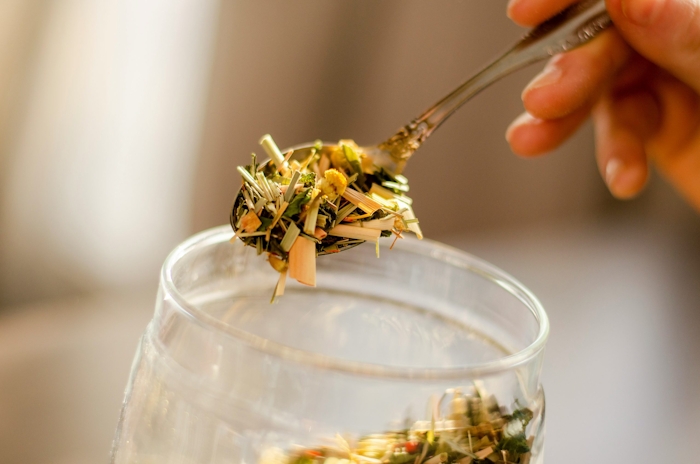
How to Make Easy Cannabis-Infused Edibles at Home
Making cannabis-infused edibles at home has never been more accessible, providing complete control over ingredients and potency while significantly reducing costs compared to dispensary prices.
The global edibles market reached $12.3 billion in 2024 and is projected to hit $54 billion by 2034, reflecting growing consumer preference for this consumption method. This comprehensive guide walks you through every step of creating safe, effective cannabis edibles using simple kitchen equipment and proven techniques.
Key Takeaways
- Decarboxylation is essential – Heat cannabis at 245°F for 30-40 minutes to activate THC before infusing
- Start with 2.5-5mg THC per serving for beginners, waiting 2-4 hours before consuming more
- Coconut oil provides superior extraction, making it one of the most effective carriers for cannabinoids
- Homemade edibles cost significantly less than dispensary products while allowing ingredient control
- Effects last 6-8 hours with onset in 30-120 minutes due to liver metabolism, creating potent 11-hydroxy-THC
- Store properly in airtight containers – refrigerated products last 2-3 months, frozen up to 12 months
- Temperature control prevents cannabinoid loss – never exceed 340°F when baking with infusions
Why Decarboxylation Makes or Breaks Your Edibles
The foundation of all cannabis edibles begins with decarboxylation – the chemical process that transforms non-psychoactive THCA into psychoactive THC through controlled heat application. Without this crucial step, your edibles will have minimal effects regardless of cannabis quality.
The Science Behind Activation
Decarboxylation occurs when heat removes a carboxyl group (COOH) from cannabinoid acids:
- Optimal temperature: 245°F (118°C) for 30-40 minutes
- Visual indicators: Golden-brown color and dry, crumbly texture
- Temperature limits: Below 220°F = incomplete activation, above 300°F = cannabinoid destruction
Cannabinoid-Specific Requirements
Different cannabinoids require unique parameters for optimal activation:
- THC: 245°F for 30-40 minutes
- CBD: 280°F for 60-90 minutes
- CBG: 220°F for 60 minutes
- CBN formation: 250°F for up to 120 minutes
Recent research shows that decarboxylation at 230°F achieves complete THCA to THC conversion in 30 minutes, while 265°F reduces required time to just 9 minutes – though higher temperatures risk terpene loss.
Cannabis Infusion Methods That Actually Work
Cannabutter: The Classic Foundation
The traditional cannabutter method remains popular for its versatility in baking applications:
Standard Recipe:
- 1 cup (7-10 grams) decarboxylated cannabis
- 1 cup (2 sticks) unsalted butter
- 1 cup water (prevents burning)
- Maintain 160°F-200°F for 2-3 hours
Storage guidelines:
- Refrigerated: 2 weeks
- Frozen: 6 months
- Portion in ice cube trays for convenient dosing
Butter’s saturated fat content provides good cannabinoid absorption, though coconut oil and other alternatives may offer higher extraction rates.
Coconut Oil: Superior Cannabinoid Retention
With over 80% saturated fats, coconut oil provides excellent extraction capabilities, with some sources reporting extraction rates up to 82% under optimal conditions:
Infusion process:
- 1 ounce of cannabis to 16 ounces of coconut oil
- Heat at 170°F for 5 hours or 160°F for 10 hours
- Strain through cheesecloth without squeezing
Key advantages:
- High smoke point (400°F refined, 350°F unrefined)
- Solid at room temperature for easy storage
- 6+ month shelf life
- Suitable for vegan recipes
- High saturated fat content optimizes cannabinoid extraction
MCT Oil: Rapid Absorption Benefits
MCT oil provides excellent extraction with unique properties:
- Infusion ratio: 1 ounce of cannabis to 16 ounces of oil
- Temperature: 180°F-190°F for 4 hours
- Best uses: Sublingual preparations, beverages, salad dressings
- Limitations: 284°F smoke point restricts high-heat cooking
Alcohol Tinctures: Maximum Potency
Green Dragon tinctures offer highly efficient extraction when using high-proof alcohol:
Quick method (Master Wu’s):
- Decarboxylate ⅛ ounce cannabis at 325°F for 5 minutes
- Infuse in 2 ounces 190-proof alcohol at 170°F for 20 minutes
- Strain and store in dark glass bottles
Traditional cold extraction:
- Combine decarbed cannabis with high-proof alcohol
- Store in freezer 3-4 weeks, shaking daily
- Preserves more terpenes than heat methods
Dosing Mathematics Every Home Chef Needs
Understanding proper dosing prevents uncomfortable experiences and ensures consistent results across batches.
Basic Calculation Formula
Total THC (mg) = Weight of cannabis (grams) × THC percentage ÷ 100 × 1000
Example calculation:
- 7 grams of 20% THC cannabis = 1,400mg total THC
- Decarboxylation loss (12.3%) = 1,227.8mg usable THC
- Extraction efficiency varies by oil and method – expect 60-90% extraction
- Final THC content depends on extraction conditions
Standard Dosing Guidelines
Proper dosing varies by experience level:
- Microdose: 1-2.5mg THC (enhanced focus, mild relief)
- Beginner: 2.5-5mg THC (noticeable relaxation)
- Regular user: 10-20mg THC (strong euphoria)
- High tolerance: 30-50mg THC (intense effects)
- Medical patients: 50-100mg+ THC (under supervision)
The 11-Hydroxy-THC Factor
Edibles create unique effects through liver metabolism:
- Bioavailability: Typically 4-12% for edibles vs 10-35% for smoking
- Metabolite potency: 11-hydroxy-THC is 2-3 times stronger than Delta-9 THC
- Duration: Effects last 6-8 hours vs 1-4 hours for inhalation
- Onset time: 30-120 minutes (sometimes up to 4 hours)
Essential Equipment for Success
Basic Starter Kit ($150 total)
Must-have items:
- Digital scale with milligram precision ($30)
- Instant-read thermometer ($15)
- Quality herb grinder ($20)
- Fine-mesh strainer and cheesecloth ($15)
- Airtight storage containers ($20)
- Silicone molds for gummies ($15)
- Double boiler or slow cooker ($35)
Professional Automation Options
Infusion machines simplify the process:
- MagicalButter MB2e ($200) – Automatic infusion with temperature control (requires separate decarboxylation)
- LEVO II Oil Infuser ($300) – Elegant design with app control
- Ardent FX ($350) – Portable all-in-one functionality, including decarboxylation
Testing equipment:
- tCheck Potency Tester – Measures THC/CBD levels (±10% accuracy)
- Essential for consistent dosing across batches
Four Foolproof Beginner Recipes
Classic Cannabis Brownies
This traditional recipe yields 12 brownies (potency depends on cannabutter strength):
Ingredients:
- ½ cup cannabutter
- 1 cup sugar
- 2 eggs
- ⅓ cup cocoa powder
- ½ cup flour
- ¼ teaspoon each salt and baking powder
Instructions:
- Mix melted cannabutter with sugar and beaten eggs
- Combine dry ingredients separately
- Fold together until just mixed
- Bake at 350°F for 25-30 minutes (never exceed 340°F)
- Cool completely before cutting
Precision Cannabis Gummies
Gummies offer excellent portion control and portability:
Recipe yields approximately 50 gummies:
- 1 ounce unflavored gelatin
- ½ cup cold water for blooming
- ½ cup cannabis oil
- 2 teaspoons liquid lecithin
- 3 ounces flavored gelatin
- 1 teaspoon lemon juice
Process:
- Bloom unflavored gelatin in cold water
- Heat cannabis oil with lecithin in a double boiler
- Boil water with flavored gelatin separately
- Combine all mixtures, whisking vigorously for 10 minutes
- Fill molds quickly, refrigerate 30 minutes
- Air-dry 12-72 hours for optimal texture
Cannabis Herbal Tea
Perfect for microdosing:
- 1 teaspoon favorite herbal tea
- ¼ teaspoon cannabis tincture
- Hot water (not boiling)
- Optional: honey, milk, or CBD oil for balance
Quick Cannabis Popcorn
Ideal for movie nights:
- 1 bag plain popcorn
- 2 tablespoons melted cannabutter
- Sea salt and optional seasonings
- Yields 4-6 servings
Storage Methods That Preserve Potency
Optimal Storage Conditions
Proper storage maintains potency while ensuring safety:
Environmental factors:
- Temperature: Below 70°F ideal
- Light: Complete darkness preferred
- Air: Vacuum-sealed or minimal headspace
- Humidity: 59-63% RH prevents mold
Shelf Life by Product Type
Different edibles have varying storage requirements:
Baked goods:
- Room temperature: 3-7 days
- Refrigerated: 1-2 weeks
- Frozen: 6 months
Gummies and candies:
- Room temperature: 2-4 weeks (if properly dried)
- Refrigerated: 3-6 months
- Frozen: 12 months
Infused oils and butters:
- Refrigerated: 2-3 months
- Frozen: 12-18 months
Signs of Spoilage
Visual indicators:
- Mold growth (fuzzy patches)
- Discoloration
- Oil separation
- Texture changes
Olfactory warnings:
- Musty or rancid odors
- Sour smell
- Loss of cannabis aroma
Cannabis plant material shows approximately 16.6% THC loss after one year at room temperature. However, degradation rates for finished edibles vary significantly based on product type and storage conditions. Proper storage in cool, dark, sealed conditions dramatically slows degradation.
Common Mistakes That Ruin Batches
Temperature Control Errors
Poor temperature management causes most failures:
- Decarboxylation mistakes: Under 220°F = incomplete activation
- Infusion problems: Over 245°F degrades THC to CBN
- Baking issues: Exceeding 340°F destroys cannabinoids
- Solution: Use calibrated thermometers and low-heat methods
Uneven Distribution Creates "Hot Spots"
Prevention strategies:
- Mix infused oil thoroughly into recipes
- Use emulsifiers like lecithin for better binding
- Test multiple samples from each batch
- Cut finished products into smaller, uniform portions
Over-Straining Releases Chlorophyll
Proper technique:
- Allow natural draining through cheesecloth
- Never squeeze or press plant material
- Double-strain for clarity
- Accept some oil loss for better flavor
Dosing Miscalculations
Common errors include:
- Forgetting decarboxylation loss (12.3%)
- Ignoring extraction efficiency variations
- Not accounting for serving sizes
- Assuming even distribution
Legal Considerations Vary by State
Current Legal Landscape
As of 2025, recreational cannabis is legal in 24 states plus Washington D.C.:
State-specific regulations:
- California: 6 plants per residence, 28.5g flower possession
- Colorado: 6 plants per adult (3 flowering), no volatile solvents
- Massachusetts: 12 plants per household, 10 ounces home storage
- Illinois: No home cultivation for recreational users
Federal vs State Conflicts
Important legal considerations:
- Cannabis remains federally illegal (Schedule I)
- Interstate transport is prohibited even between legal states
- Landlords can prohibit all cannabis activities
- Workplace drug testing still applies
Safety Requirements
Child-resistant packaging is mandatory:
- Must meet CPSC standards
- Clear THC warning labels required
- Locked storage away from minors
- No sharing with anyone under 21
Market Trends Shape Home Production
Industry Growth Statistics
The cannabis market shows significant expansion:
- Global edibles market: $12.3 billion (2024) → $54 billion (2034)
- U.S. edibles sales: Estimated $3-5 billion annually (roughly 10-15% of total cannabis sales)
- Cannabis beverages are showing strong growth, though still a small market segment
- Gummies lead product categories, followed by chocolates and baked goods
Demographic Shifts
Consumer patterns reveal changing preferences:
- Young women (ages 19-30) showing increased cannabis use rates
- Ages 18-25: 42.6% past-year consumption
- Ages 35-50: 24.9% prevalence (up 12.3% since 2011)
- Medical patients prefer edibles for consistent dosing
Demographics shift beyond traditional stereotypes as consumption patterns evolve across age groups and genders. The 18-25 age group shows the highest usage at 42.6% past-year consumption, while adults 35-50 demonstrate 24.9% prevalence – up 12.3% since 2011. Medical patients increasingly choose edibles for consistent dosing and extended duration, particularly older adults seeking alternatives to pharmaceutical pain management.
Understanding bioavailability and metabolism explains edibles’ unique effects profile. With typically 4-12% oral bioavailability compared to 10-35% for inhalation, edibles seem less efficient. However, liver conversion to 11-hydroxy-THC creates metabolites 2-3 times more potent than Delta-9 THC, producing intense, long-lasting effects. Individual variations in cytochrome P450 enzyme activity explain why some people don’t respond to edibles while others find them overwhelmingly strong.
Why Herb Makes Your Edibles Journey Easier
Herb stands as your trusted companion in the cannabis edibles journey, offering comprehensive resources that complement your homemade creations. Whether you’re seeking strain recommendations for specific effects, exploring new recipes, or understanding the latest cannabis science, Herb provides expert guidance backed by years of cannabis journalism.
The platform’s extensive learning center covers everything from terpene profiles to consumption methods, helping you make informed decisions about your edibles. Herb’s product reviews guide you toward quality equipment and ingredients, while those interested in growing their own, can check out Herb’s cultivation guides that ensure you’re working with the best possible starting material for your edibles.
Conclusion
Creating cannabis edibles at home combines culinary skill with scientific precision, requiring careful attention to temperature, timing, and dosing. Success depends on understanding decarboxylation chemistry, selecting appropriate infusion methods, calculating accurate dosages, and following safety protocols.
While the process involves multiple steps and considerations, proper technique yields consistent, safe products tailored to individual preferences and needs. As the market continues expanding and regulations evolve, home production offers cost-effective alternatives to commercial products while providing complete control over ingredients and potency.
Remember to always verify current local laws, start with low doses, store products securely, and prioritize safety throughout the process.
Frequently Asked Questions
How long do homemade edibles stay fresh and potent?
Properly stored homemade edibles maintain potency for varying periods depending on type and storage method. Baked goods last 3-7 days at room temperature, 1-2 weeks refrigerated, or 6 months frozen. Gummies can last 3-6 months refrigerated when thoroughly dried and stored in airtight containers. Cannabis-infused oils and butters maintain quality for 2-3 months refrigerated or 12-18 months frozen. According to research on cannabis plant material, dried flower loses approximately 16.6% THC potency after one year at room temperature, though finished edibles may degrade differently based on their ingredients and storage conditions.
Can I make edibles without the cannabis smell?
Yes, several methods minimize odor during production. Using pre-made tinctures or distillates eliminates most smell since decarboxylation already occurred. Water curing fresh cannabis for 7-10 days before decarbing removes chlorophyll and reduces aroma by 70%. Sous vide infusion in vacuum-sealed bags contains odors effectively. Using a vaporizer for decarboxylation captures most terpenes. Adding vanilla extract or strong spices to recipes masks remaining cannabis flavors.
What's the difference between using indica vs sativa strains in edibles?
While traditional indica/sativa distinctions become less relevant after liver metabolism converts THC to 11-hydroxy-THC, terpene profiles still influence effects. Indica-dominant strains with myrcene and linalool may provide more sedating effects, while sativa-dominant varieties with limonene and pinene might offer more energetic experiences. However, the entourage effect means cannabinoid and terpene combinations matter more than simple indica/sativa labels. Most users report that edibles produce similar body-focused effects regardless of starting strain.
How can I reduce the earthy cannabis taste in my edibles?
Several techniques minimize cannabis flavor in finished products. Water curing before decarboxylation removes 60-80% of chlorophyll taste. Using refined coconut oil instead of butter reduces flavor transfer. Adding chocolate, citrus zest, or mint effectively masks the remaining taste. Straining infusions multiple times through coffee filters removes plant particles. Using less plant material with longer infusion times extracts cannabinoids without excess chlorophyll. Cannabis distillates or isolates provide effects without any plant taste.
Is it safe to cook with cannabis around pets?
Cannabis toxicity poses serious risks to pets, particularly dogs, who have more cannabinoid receptors than humans. Keep all cannabis products, including raw flower and infusions, in locked containers out of pet reach. Never leave edibles unattended during cooling or drying. Symptoms of pet cannabis poisoning include lethargy, loss of balance, vomiting, and urinary incontinence. If a pet consumes cannabis, contact a veterinarian immediately – THC toxicity can be fatal in severe cases. Consider using CBD products specifically formulated for pets instead.
Herb Recommended Products:
READ MORE










